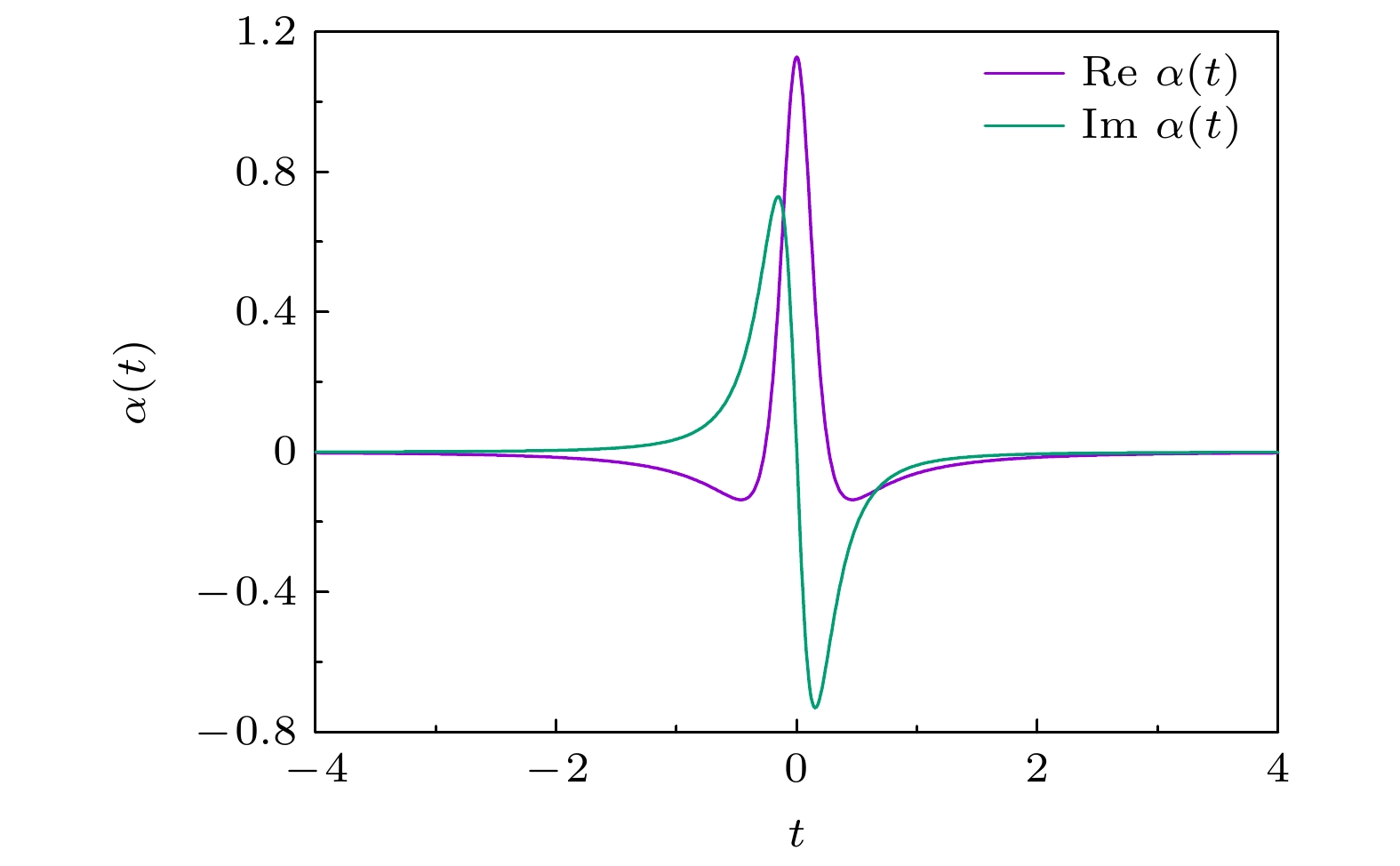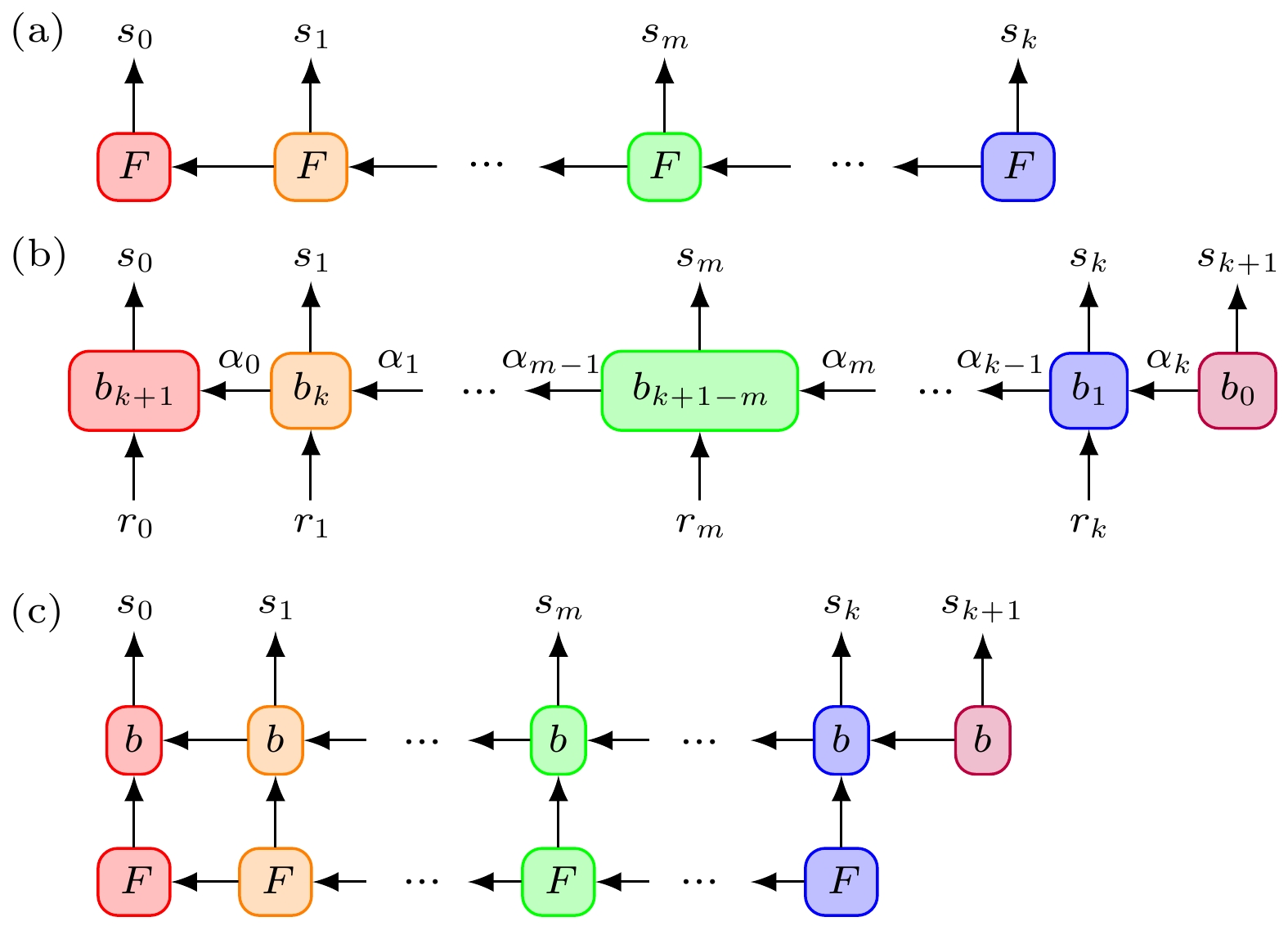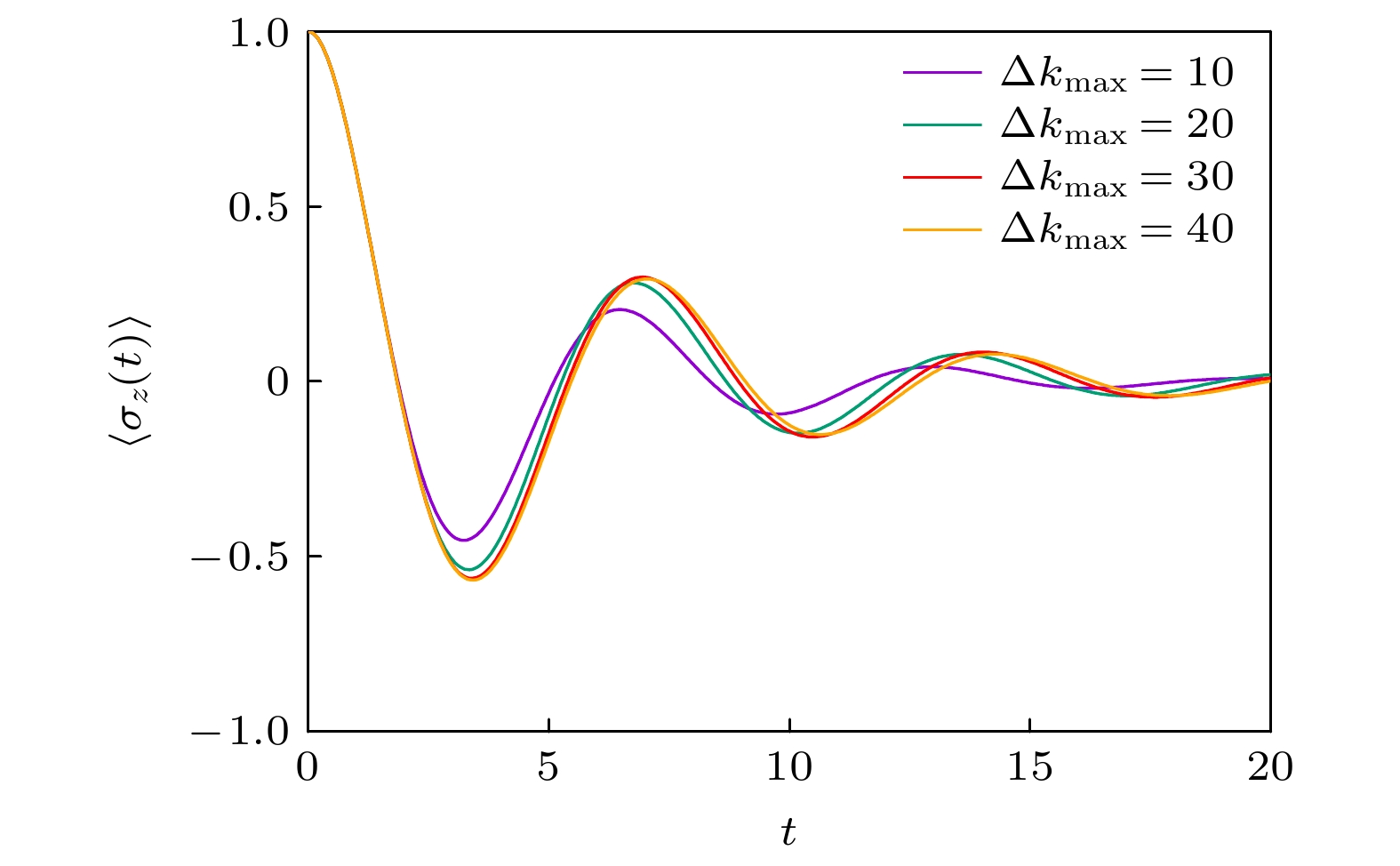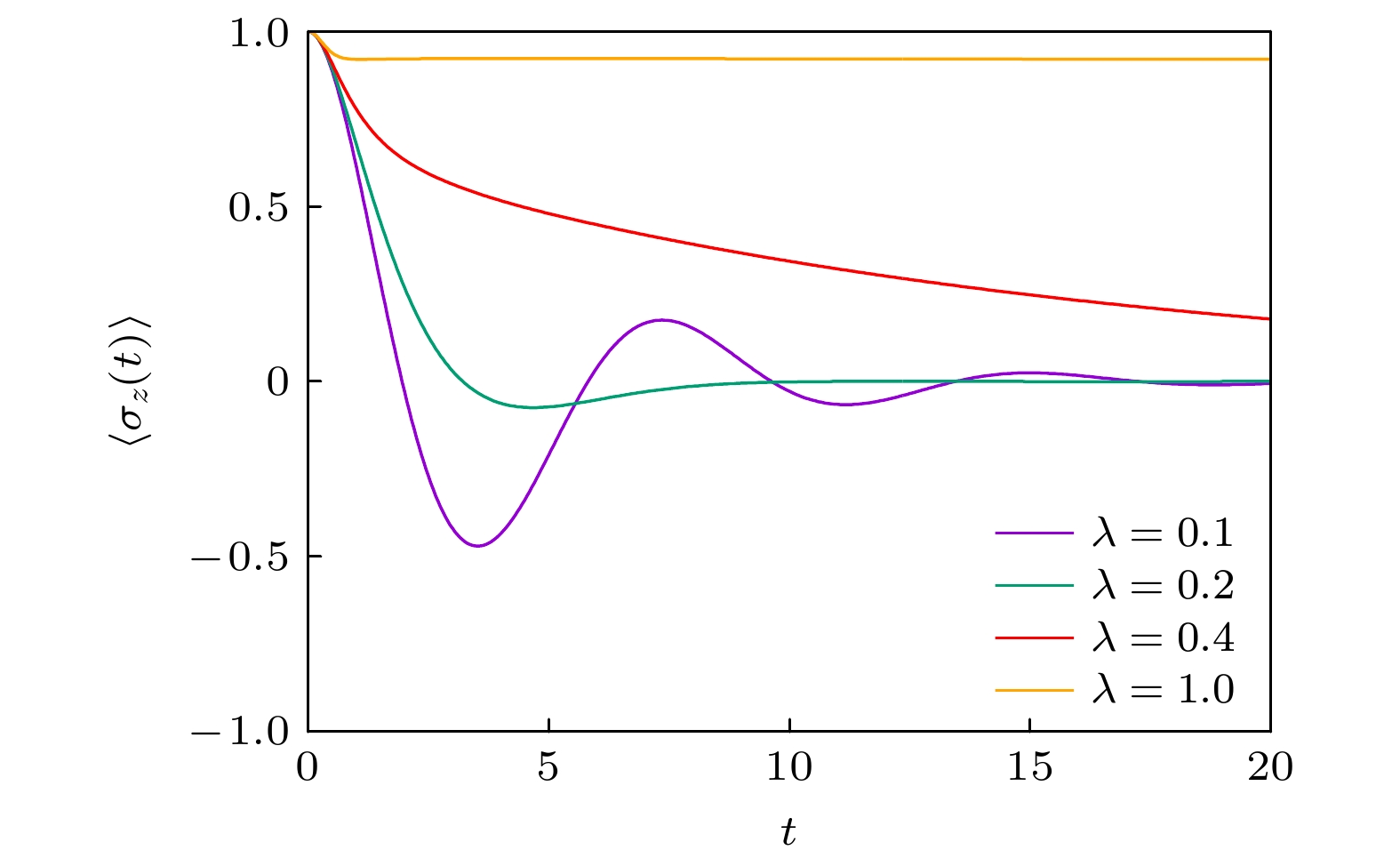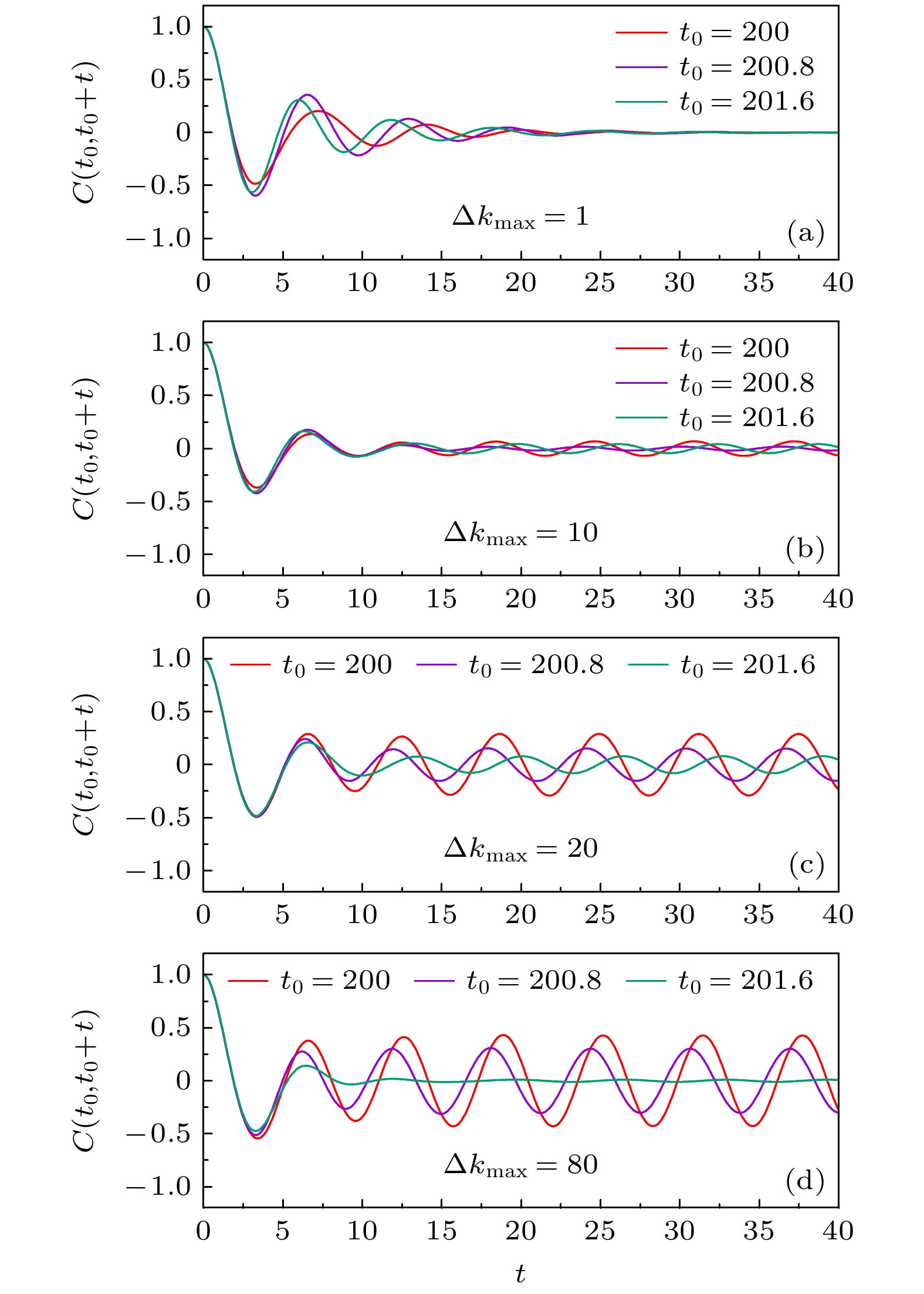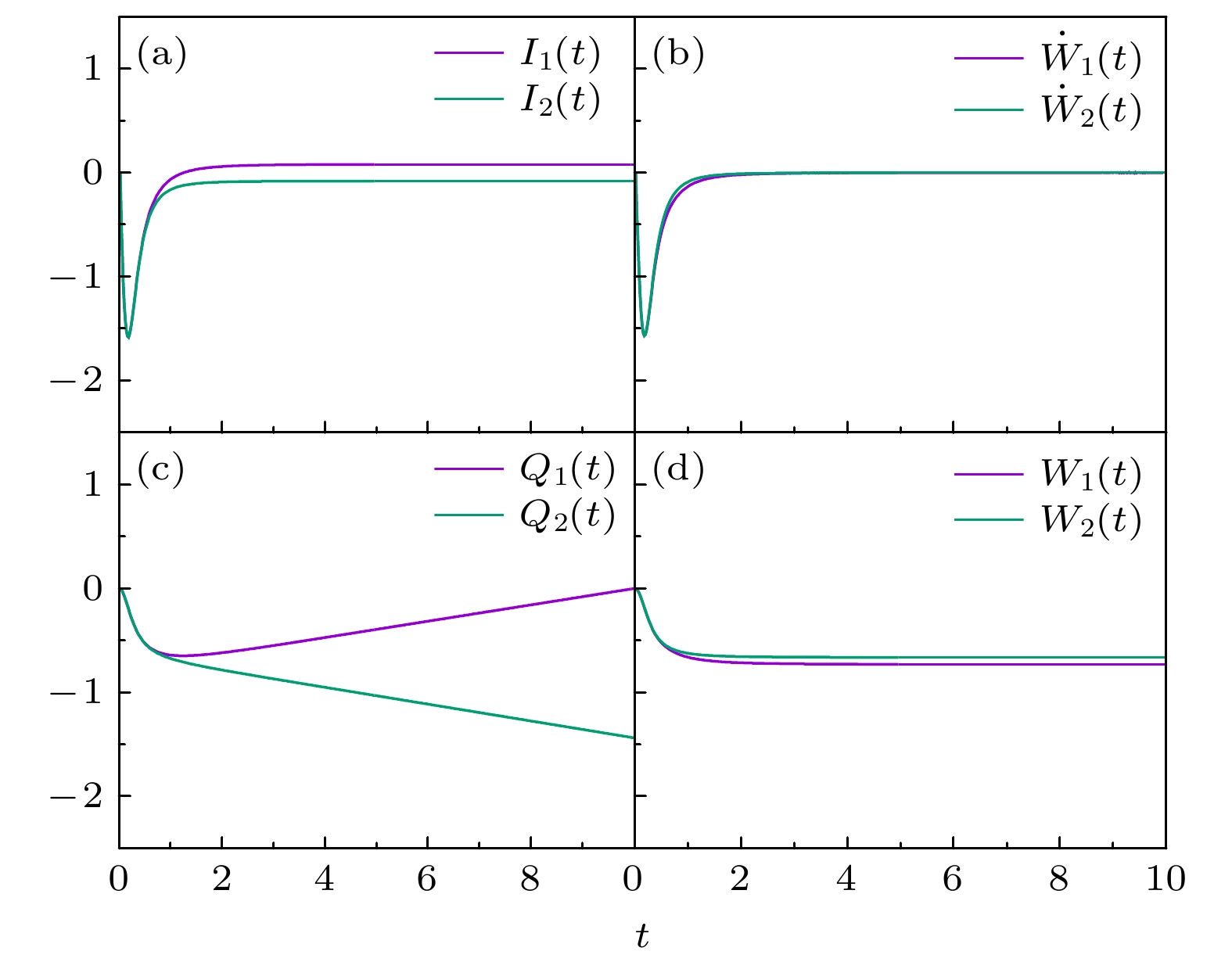-
Open quantum systems play an important role in developing quantum sciences, and therefore the study of corresponding numerical method is of great significance. For the open quantum systems, the quasi-adiabatic propagator path integral invented in 1990s is one of the few numerically exact methods. However, its computational complexity scales exponentially with system size and correlation length, and therefore its application is limited in practical calculation. In recent years, the study and application of tensor network have made rapid progress. Representing the path integral by tensor network makes the computational complexity increase polynomially, thus greatly improving the computational efficiency. Such a new method is called time-evolving matrix product operator. At the very beginning, the reduced density matrix is represented as a matrix product state. Then the time evolution of the system can be achieved by iteratively applying matrix product operators to the matrix product state. The iterative process is amenable to the standard matrix product states compression algorithm, which keeps the computational cost on a polynomial scale. The time-evolving matrix product operator is an efficient, numerically exact and fully non-Markovian method, which has a broad application prospect in the study of quantum open systems. For instance, it is already used in the study of the thermalization, heat statistic, heat transfer and optimal control of the quantum open systems, and conversely it can be also used to investigate the effect of the system on the environment. In addition, the TEMPO method is naturally related to the process tensor, and can be used to calculate the correlation function of the system efficiently. In this article we review this method and its applications. We give a brief introduction of the path integral formalism of Caldeira-Leggett model. According to the path integral formalism, we demonstrate the usage of quasi-adiabatic propagator path integral method. we give the basic idea of matrix product states, and we show how to recast quasi-adiabatic propagator path integral method into time-evolving matrix product operators method by employing the concept of matrix product states and matrix product operators, and give a review of its applications. In addition, we use the calculation results of physical quantities, correlation functions and heat currents in the spin-boson model to illustrate the applications of the time-evolving matrix product operator method.
-
Keywords:
- quantum open system /
- quasi-adiabatic propagator path integral /
- time-evolving matrix product operators /
- tensor network /
- non-Markovian dynamics
[1] Weiss U 1993 Quantum Dissipative Systems (Singapore: World Scientific)
[2] Breuer H P 2007 The Theory of Open Quantum Systems (New York: Oxford University Press)
[3] Caldeira A O, Leggett A J 1981 Phys. Rev. Lett. 46 211
 Google Scholar
Google Scholar
[4] Caldeira A O, Leggett A J 1983 Physica A 121 587
 Google Scholar
Google Scholar
[5] Caldeira A, Leggett A 1983 Ann. Phys. 149 374
 Google Scholar
Google Scholar
[6] Leggett A J, Chakravarty S, Dorsey A T, Fisher M P A, Garg A, Zwerger W 1987 Rev. Mod. Phys. 59 1
 Google Scholar
Google Scholar
[7] Makarov D E, Makri N 1994 Chem. Phys. Lett. 221 482
 Google Scholar
Google Scholar
[8] Makri N 1995 J. Math. Phys. 36 2430
 Google Scholar
Google Scholar
[9] Makarov D E, Makri N 1995 Phys. Rev. B 52 R2257
[10] Makarov D E, Makri N 1995 Phys. Rev. E 52 5863
[11] Golosov A A, Friesner R A, Pechukas P 1999 J. Chem. Phys. 110 138
 Google Scholar
Google Scholar
[12] Shao J, Makri N 2002 J. Chem. Phys. 116 507
 Google Scholar
Google Scholar
[13] Dong K, Makri N 2004 Chem. Phys. 296 273
 Google Scholar
Google Scholar
[14] Dong K, Makri N 2004 Phys. Rev. A 70 042101
 Google Scholar
Google Scholar
[15] Thorwart M, Eckel J, Mucciolo E R 2005 Phys. Rev. B 72 235320
 Google Scholar
Google Scholar
[16] Nalbach P, Thorwart M 2009 Phys. Rev. Lett. 103 220401
 Google Scholar
Google Scholar
[17] Arceci L, Barbarino S, Fazio R, Santoro G E 2017 Phys. Rev. B 96 054301
 Google Scholar
Google Scholar
[18] Schollwöck U 2011 Ann. Phys. 326 96
 Google Scholar
Google Scholar
[19] Orús R 2014 Ann. Phys. 349 117
 Google Scholar
Google Scholar
[20] Strathearn A, Kirton P, Kilda D, Keeling J, Lovett B W 2018 Nat. Commun. 9 3322
 Google Scholar
Google Scholar
[21] Keldysh L V 1965 Sov. Phys. JETP 20 1018
[22] Lifshitz E M, Pitaevskii L P 1981 Course of Theoretical Physics Volume 10: Physical Kinetics (Elsevier)
[23] Kamenev A, Levchenko A 2009 Adv. Phys. 58 197
 Google Scholar
Google Scholar
[24] Wang J S, Agarwalla B K, Li H, Thingna J 2014 Front. Phys. 9 673
[25] Chen R 2023 New J. Phys. 25 033035
 Google Scholar
Google Scholar
[26] Feynman R P, Vernon F L 1963 Ann. Phys. 24 118
 Google Scholar
Google Scholar
[27] Grabert H, Schramm P, Ingold G L 1988 Phys. Rep. 168 115
 Google Scholar
Google Scholar
[28] Negele J W, Orland H 1998 Quantum Many-Particle Systems (Colorado: Westview Press)
[29] Trotter H F 1959 Proc. Amer. Math. Soc. 10 545
 Google Scholar
Google Scholar
[30] Suzuki M 1976 Commun. Math. Phys. 51 183
 Google Scholar
Google Scholar
[31] Makarov D E, Makri N 1993 Phys. Rev. A 48 3626
 Google Scholar
Google Scholar
[32] Makri N, Makarov D E 1995 J. Chem. Phys. 102 4600
 Google Scholar
Google Scholar
[33] Dattani N S, Pollock F A, Wilkins D M 2012 Quantum Phys. Lett. 1 35
[34] Chen R, Xu X 2023 Eur. Phys. J. Plus 138 194
 Google Scholar
Google Scholar
[35] Verstraete F, García-Ripoll J J, Cirac J I 2004 Phys. Rev. Lett. 93 207204
 Google Scholar
Google Scholar
[36] Zwolak M, Vidal G 2004 Phys. Rev. Lett. 93 207205
 Google Scholar
Google Scholar
[37] Barthel T, Schollwöck U, White S R 2009 Phys. Rev. B 79 245101
 Google Scholar
Google Scholar
[38] Schollwöck U 2005 Rev. Mod. Phys. 77 259
 Google Scholar
Google Scholar
[39] Levin M, Nave C P 2007 Phys. Rev. Lett. 99 120601
 Google Scholar
Google Scholar
[40] Evenbly G, Vidal G 2015 Phys. Rev. Lett. 115 180405
 Google Scholar
Google Scholar
[41] Ran S J, Li W, Xi B, Zhang Z, Su G 2012 Phys. Rev. B 86 134429
 Google Scholar
Google Scholar
[42] Czarnik P, Cincio L, Dziarmaga J 2012 Phys. Rev. B 86 245101
 Google Scholar
Google Scholar
[43] Kshetrimayum A, Weimer H, Orús R 2017 Nat. Commun. 8 1291
 Google Scholar
Google Scholar
[44] Fishman M T, White S R 2015 Phys. Rev. B 92 075132
 Google Scholar
Google Scholar
[45] Dorda A, Ganahl M, Evertz H G, Linden W, Arrigoni E 2015 Phys. Rev. B 92 125145
 Google Scholar
Google Scholar
[46] Ganahl M, Aichhorn M, Evertz H G, Thunström P, Held K, Verstraete F 2015 Phys. Rev. B 92 155132
 Google Scholar
Google Scholar
[47] Wolf F A, Go A, McCulloch I P, Millis A J, Schollwöck U 2015 Phys. Rev. X 5 041032
[48] Linden N O, Zingl M, Hubig C, Parcollet O, Schollwöck U 2020 Phys. Rev. B 101 041101
 Google Scholar
Google Scholar
[49] Kohn L, Santoro G E 2021 Phys. Rev. B 104 014303
[50] Jørgensen M R, Pollock F A 2019 Phys. Rev. Lett. 123 240602
 Google Scholar
Google Scholar
[51] Carmichael H J 1999 Statistical Methods in Quantum Optics 1: Master Equations and Fokker-Planck Equations (Berlin: Springer-Verlag)
[52] Gardiner C W, Zoller P 2004 Quantum Noise: A Handbook of Markovian and Non-Markovian Quantum Stochastic Methods with Applications to Quantum Optics (Berlin: Springer-Verlag)
[53] Jørgensen M R, Pollock F A 2020 Phys. Rev. A 102 052206
 Google Scholar
Google Scholar
[54] Cerrillo J, Cao J 2014 Phys. Rev. Lett. 112 110401
 Google Scholar
Google Scholar
[55] Popovic M, Mitchison M T, Strathearn A, Lovett B W, Goold J, Eastham P R 2021 PRX Quantum 2 020338
 Google Scholar
Google Scholar
[56] Fux G E, Butler E P, Eastham P R, Lovett B W, Keeling J 2021 Phys. Rev. Lett. 126 200401
 Google Scholar
Google Scholar
[57] Fux G E, Kilda D, Lovett B W, Keeling J 2022 10.48550/arXiv.2201.05529 [quant-ph]
[58] Gribben D, Strathearn A, Fux G E, Kirton P, Lovett B W 2021 Quantum 6 847
[59] Gribben D, Rouse D M, Iles-Smith J, Strathearn A, Maguire H, Kirton P, Nazir A, Gauger E M, Lovett B W 2022 PRX Quantum 3 010321
 Google Scholar
Google Scholar
[60] Ye E, Chan G K L 2021 J. Chem. Phys. 155 044104
 Google Scholar
Google Scholar
[61] Chiu Y F, Strathearn A, Keeling J 2022 Phys. Rev. A 106 012204
 Google Scholar
Google Scholar
[62] Otterpohl F, Nalbach P, Thorwart M 2022 Phys. Rev. Lett. 129 120406
 Google Scholar
Google Scholar
[63] Bose A 2022 Phys. Rev. B 105 024309
[64] Florens S, Venturelli D, Narayanan R (edited by Chandra A K, Das A, Chakrabarti B K) 2010 Quantum Quenching, Annealing and Computation (Berlin, Heidelberg: Springer) p145
[65] Hur K L (edited by Carr L D) 2010 Understanding Quantum Phase Transitions (New York: CRC Press) p217
[66] Löfstedt R, Coppersmith S N 1994 Phys. Rev. Lett. 72 1947
 Google Scholar
Google Scholar
[67] Gammaitoni L, Hänggi P, Jung P, Marchesoni F 1998 Rev. Mod. Phys. 70 223
 Google Scholar
Google Scholar
[68] Grifoni M, Hänggi P 1998 Phys. Rep. 304 229
 Google Scholar
Google Scholar
[69] Meir Y, Wingreen N S 1992 Phys. Rev. Lett. 68 2512
 Google Scholar
Google Scholar
[70] Brandes T, Aguado R, Platero G 2004 Phys. Rev. B 69 205326
 Google Scholar
Google Scholar
[71] Wang J S 2007 Phys. Rev. Lett. 99 160601
 Google Scholar
Google Scholar
[72] Segal D 2013 Phys. Rev. B 87 195436
 Google Scholar
Google Scholar
[73] Lü J T, Christensen R B, Wang J S, Hedegård P, Brandbyge M 2015 Phys. Rev. Lett. 114 096801
 Google Scholar
Google Scholar
[74] Ludovico M F, Lim J S, Moskalets M, Arrachea L, Sánchez D 2014 Phys. Rev. B 89 161306
 Google Scholar
Google Scholar
[75] Ludovico M, Arrachea L, Moskalets M, Sánchez D 2016 Entropy 18 419
 Google Scholar
Google Scholar
[76] Ludovico M F, Moskalets M, Sánchez D, Arrachea L 2016 Phys. Rev. B 94 035436
 Google Scholar
Google Scholar
[77] Ludovico M F, Arrachea L, Moskalets M, Sánchez D 2018 Phys. Rev. B 97 041416
 Google Scholar
Google Scholar
-
图 4 截断之后的递归关系(其中灰色方格代表(42)式中的求和) (a)递归公式(42); (b)从初始条件
$ F^{s_0} $ 开始演化到$ N=4 $ 步时的递推步骤Figure 4. An illustration of recursive relation after truncation, here the gray square stands for the summation in Eq. (42): (a) Recursive relation (42); (b) the iterative progress of
$ N=4 $ steps evolution with initial condition$ F^{s_0} $ .图 5 TEMPO算法中的一些张量网络图示 (a)
$ F $ 张量的矩阵乘积态表示; (b)$ B $ 张量的矩阵乘积算符表示; (c)递归关系(40)的张量网络表示Figure 5. An illustration of some tensor networks in TEMPO: (a) The matrix product states representation of
$ F $ tensor; (b) the matrix product operators representation of$ B $ tensor; (c) the tensor network representation of recursive relation (40). -
[1] Weiss U 1993 Quantum Dissipative Systems (Singapore: World Scientific)
[2] Breuer H P 2007 The Theory of Open Quantum Systems (New York: Oxford University Press)
[3] Caldeira A O, Leggett A J 1981 Phys. Rev. Lett. 46 211
 Google Scholar
Google Scholar
[4] Caldeira A O, Leggett A J 1983 Physica A 121 587
 Google Scholar
Google Scholar
[5] Caldeira A, Leggett A 1983 Ann. Phys. 149 374
 Google Scholar
Google Scholar
[6] Leggett A J, Chakravarty S, Dorsey A T, Fisher M P A, Garg A, Zwerger W 1987 Rev. Mod. Phys. 59 1
 Google Scholar
Google Scholar
[7] Makarov D E, Makri N 1994 Chem. Phys. Lett. 221 482
 Google Scholar
Google Scholar
[8] Makri N 1995 J. Math. Phys. 36 2430
 Google Scholar
Google Scholar
[9] Makarov D E, Makri N 1995 Phys. Rev. B 52 R2257
[10] Makarov D E, Makri N 1995 Phys. Rev. E 52 5863
[11] Golosov A A, Friesner R A, Pechukas P 1999 J. Chem. Phys. 110 138
 Google Scholar
Google Scholar
[12] Shao J, Makri N 2002 J. Chem. Phys. 116 507
 Google Scholar
Google Scholar
[13] Dong K, Makri N 2004 Chem. Phys. 296 273
 Google Scholar
Google Scholar
[14] Dong K, Makri N 2004 Phys. Rev. A 70 042101
 Google Scholar
Google Scholar
[15] Thorwart M, Eckel J, Mucciolo E R 2005 Phys. Rev. B 72 235320
 Google Scholar
Google Scholar
[16] Nalbach P, Thorwart M 2009 Phys. Rev. Lett. 103 220401
 Google Scholar
Google Scholar
[17] Arceci L, Barbarino S, Fazio R, Santoro G E 2017 Phys. Rev. B 96 054301
 Google Scholar
Google Scholar
[18] Schollwöck U 2011 Ann. Phys. 326 96
 Google Scholar
Google Scholar
[19] Orús R 2014 Ann. Phys. 349 117
 Google Scholar
Google Scholar
[20] Strathearn A, Kirton P, Kilda D, Keeling J, Lovett B W 2018 Nat. Commun. 9 3322
 Google Scholar
Google Scholar
[21] Keldysh L V 1965 Sov. Phys. JETP 20 1018
[22] Lifshitz E M, Pitaevskii L P 1981 Course of Theoretical Physics Volume 10: Physical Kinetics (Elsevier)
[23] Kamenev A, Levchenko A 2009 Adv. Phys. 58 197
 Google Scholar
Google Scholar
[24] Wang J S, Agarwalla B K, Li H, Thingna J 2014 Front. Phys. 9 673
[25] Chen R 2023 New J. Phys. 25 033035
 Google Scholar
Google Scholar
[26] Feynman R P, Vernon F L 1963 Ann. Phys. 24 118
 Google Scholar
Google Scholar
[27] Grabert H, Schramm P, Ingold G L 1988 Phys. Rep. 168 115
 Google Scholar
Google Scholar
[28] Negele J W, Orland H 1998 Quantum Many-Particle Systems (Colorado: Westview Press)
[29] Trotter H F 1959 Proc. Amer. Math. Soc. 10 545
 Google Scholar
Google Scholar
[30] Suzuki M 1976 Commun. Math. Phys. 51 183
 Google Scholar
Google Scholar
[31] Makarov D E, Makri N 1993 Phys. Rev. A 48 3626
 Google Scholar
Google Scholar
[32] Makri N, Makarov D E 1995 J. Chem. Phys. 102 4600
 Google Scholar
Google Scholar
[33] Dattani N S, Pollock F A, Wilkins D M 2012 Quantum Phys. Lett. 1 35
[34] Chen R, Xu X 2023 Eur. Phys. J. Plus 138 194
 Google Scholar
Google Scholar
[35] Verstraete F, García-Ripoll J J, Cirac J I 2004 Phys. Rev. Lett. 93 207204
 Google Scholar
Google Scholar
[36] Zwolak M, Vidal G 2004 Phys. Rev. Lett. 93 207205
 Google Scholar
Google Scholar
[37] Barthel T, Schollwöck U, White S R 2009 Phys. Rev. B 79 245101
 Google Scholar
Google Scholar
[38] Schollwöck U 2005 Rev. Mod. Phys. 77 259
 Google Scholar
Google Scholar
[39] Levin M, Nave C P 2007 Phys. Rev. Lett. 99 120601
 Google Scholar
Google Scholar
[40] Evenbly G, Vidal G 2015 Phys. Rev. Lett. 115 180405
 Google Scholar
Google Scholar
[41] Ran S J, Li W, Xi B, Zhang Z, Su G 2012 Phys. Rev. B 86 134429
 Google Scholar
Google Scholar
[42] Czarnik P, Cincio L, Dziarmaga J 2012 Phys. Rev. B 86 245101
 Google Scholar
Google Scholar
[43] Kshetrimayum A, Weimer H, Orús R 2017 Nat. Commun. 8 1291
 Google Scholar
Google Scholar
[44] Fishman M T, White S R 2015 Phys. Rev. B 92 075132
 Google Scholar
Google Scholar
[45] Dorda A, Ganahl M, Evertz H G, Linden W, Arrigoni E 2015 Phys. Rev. B 92 125145
 Google Scholar
Google Scholar
[46] Ganahl M, Aichhorn M, Evertz H G, Thunström P, Held K, Verstraete F 2015 Phys. Rev. B 92 155132
 Google Scholar
Google Scholar
[47] Wolf F A, Go A, McCulloch I P, Millis A J, Schollwöck U 2015 Phys. Rev. X 5 041032
[48] Linden N O, Zingl M, Hubig C, Parcollet O, Schollwöck U 2020 Phys. Rev. B 101 041101
 Google Scholar
Google Scholar
[49] Kohn L, Santoro G E 2021 Phys. Rev. B 104 014303
[50] Jørgensen M R, Pollock F A 2019 Phys. Rev. Lett. 123 240602
 Google Scholar
Google Scholar
[51] Carmichael H J 1999 Statistical Methods in Quantum Optics 1: Master Equations and Fokker-Planck Equations (Berlin: Springer-Verlag)
[52] Gardiner C W, Zoller P 2004 Quantum Noise: A Handbook of Markovian and Non-Markovian Quantum Stochastic Methods with Applications to Quantum Optics (Berlin: Springer-Verlag)
[53] Jørgensen M R, Pollock F A 2020 Phys. Rev. A 102 052206
 Google Scholar
Google Scholar
[54] Cerrillo J, Cao J 2014 Phys. Rev. Lett. 112 110401
 Google Scholar
Google Scholar
[55] Popovic M, Mitchison M T, Strathearn A, Lovett B W, Goold J, Eastham P R 2021 PRX Quantum 2 020338
 Google Scholar
Google Scholar
[56] Fux G E, Butler E P, Eastham P R, Lovett B W, Keeling J 2021 Phys. Rev. Lett. 126 200401
 Google Scholar
Google Scholar
[57] Fux G E, Kilda D, Lovett B W, Keeling J 2022 10.48550/arXiv.2201.05529 [quant-ph]
[58] Gribben D, Strathearn A, Fux G E, Kirton P, Lovett B W 2021 Quantum 6 847
[59] Gribben D, Rouse D M, Iles-Smith J, Strathearn A, Maguire H, Kirton P, Nazir A, Gauger E M, Lovett B W 2022 PRX Quantum 3 010321
 Google Scholar
Google Scholar
[60] Ye E, Chan G K L 2021 J. Chem. Phys. 155 044104
 Google Scholar
Google Scholar
[61] Chiu Y F, Strathearn A, Keeling J 2022 Phys. Rev. A 106 012204
 Google Scholar
Google Scholar
[62] Otterpohl F, Nalbach P, Thorwart M 2022 Phys. Rev. Lett. 129 120406
 Google Scholar
Google Scholar
[63] Bose A 2022 Phys. Rev. B 105 024309
[64] Florens S, Venturelli D, Narayanan R (edited by Chandra A K, Das A, Chakrabarti B K) 2010 Quantum Quenching, Annealing and Computation (Berlin, Heidelberg: Springer) p145
[65] Hur K L (edited by Carr L D) 2010 Understanding Quantum Phase Transitions (New York: CRC Press) p217
[66] Löfstedt R, Coppersmith S N 1994 Phys. Rev. Lett. 72 1947
 Google Scholar
Google Scholar
[67] Gammaitoni L, Hänggi P, Jung P, Marchesoni F 1998 Rev. Mod. Phys. 70 223
 Google Scholar
Google Scholar
[68] Grifoni M, Hänggi P 1998 Phys. Rep. 304 229
 Google Scholar
Google Scholar
[69] Meir Y, Wingreen N S 1992 Phys. Rev. Lett. 68 2512
 Google Scholar
Google Scholar
[70] Brandes T, Aguado R, Platero G 2004 Phys. Rev. B 69 205326
 Google Scholar
Google Scholar
[71] Wang J S 2007 Phys. Rev. Lett. 99 160601
 Google Scholar
Google Scholar
[72] Segal D 2013 Phys. Rev. B 87 195436
 Google Scholar
Google Scholar
[73] Lü J T, Christensen R B, Wang J S, Hedegård P, Brandbyge M 2015 Phys. Rev. Lett. 114 096801
 Google Scholar
Google Scholar
[74] Ludovico M F, Lim J S, Moskalets M, Arrachea L, Sánchez D 2014 Phys. Rev. B 89 161306
 Google Scholar
Google Scholar
[75] Ludovico M, Arrachea L, Moskalets M, Sánchez D 2016 Entropy 18 419
 Google Scholar
Google Scholar
[76] Ludovico M F, Moskalets M, Sánchez D, Arrachea L 2016 Phys. Rev. B 94 035436
 Google Scholar
Google Scholar
[77] Ludovico M F, Arrachea L, Moskalets M, Sánchez D 2018 Phys. Rev. B 97 041416
 Google Scholar
Google Scholar
Catalog
Metrics
- Abstract views: 8379
- PDF Downloads: 221
- Cited By: 0

















 DownLoad:
DownLoad:



